Months in Japanese is a little confusing. There are three ways to say month which are がつ Gatsu, つき Tsuki, and かげつ Kagetsu. The difference is as follows.
- がつ (月 in Kanji) Gatsu … for the name of each month (January, February, etc.)
- つき (月 in Kanji) Tsuki … for counting months with traditional Japanese numbers
- かげつ (か月 or ヶ月 using Kanji) Kagetsu … for counting months with Chinese numbers
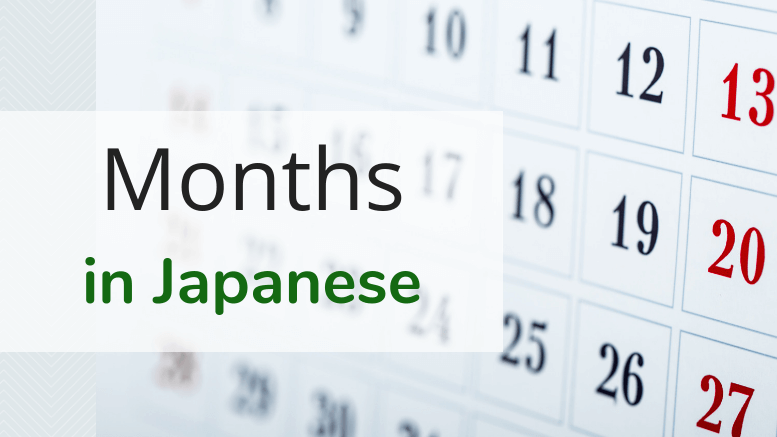
Name of Months in Japanese
Unlike English where each month has a specific name assigned, we use numbers いち (ichi) に (ni) さん (san) し (shi) to name months in Japanese.
- January 1月 – いちがつ Ichi gatsu
- February 2月 – にがつ Ni gatsu
- March 3月 – さんがつ San gatsu
- April 4月 – しがつ Shi gatsu (Not Yon gatsu)
- May 5月 – ごがつ Go gatsu
- June 6月 – ろくがつ Roku gatsu
- July 7月 – しちがつ Shichi gatsu (Not Nana gatsu)
- August 8月 – はちがつ Hachi gatsu
- September 9月 – くがつ Ku gatsu (Not Kyuu gatsu)
- October 10月 – じゅうがつ Juu gatsu
- November 11月 – じゅういちがつ Juuichi gatsu
- December 12月 – じゅうにがつ Juuni gatsu
Just be careful with April, July, and September since we have two ways to say four, seven and nine in Japanese.
Counting Months in Japanese
When you simply count months as in one month, two months, or three months, you can either use つき (Tsuki) or かげつ (Kagetsu).
The literal meaning of つき (Tsuki) is “moon.” It takes traditional Japanese numbers, and we count up to three months with つき (Tsuki) in modern Japanese.
- One month ひと月(ひとつき Hito
tsuki ) - Two months ふた月(ふたつき Futa
tsuki ) - Three months み月(みつき Mi
tsuki )
かげつ (Kagetsu) takes Chinese numbers, and you can count as many months as you want with this one.
- One month 1か月(いっかげつ Ikkagetsu)
- Two months 2か月(にかげつ Ni kagetsu)
- Three months 3か月(さんかげつ San kagetsu)
- Seventeen months 17か月(じゅうななかげつ Juunana kagetsu)
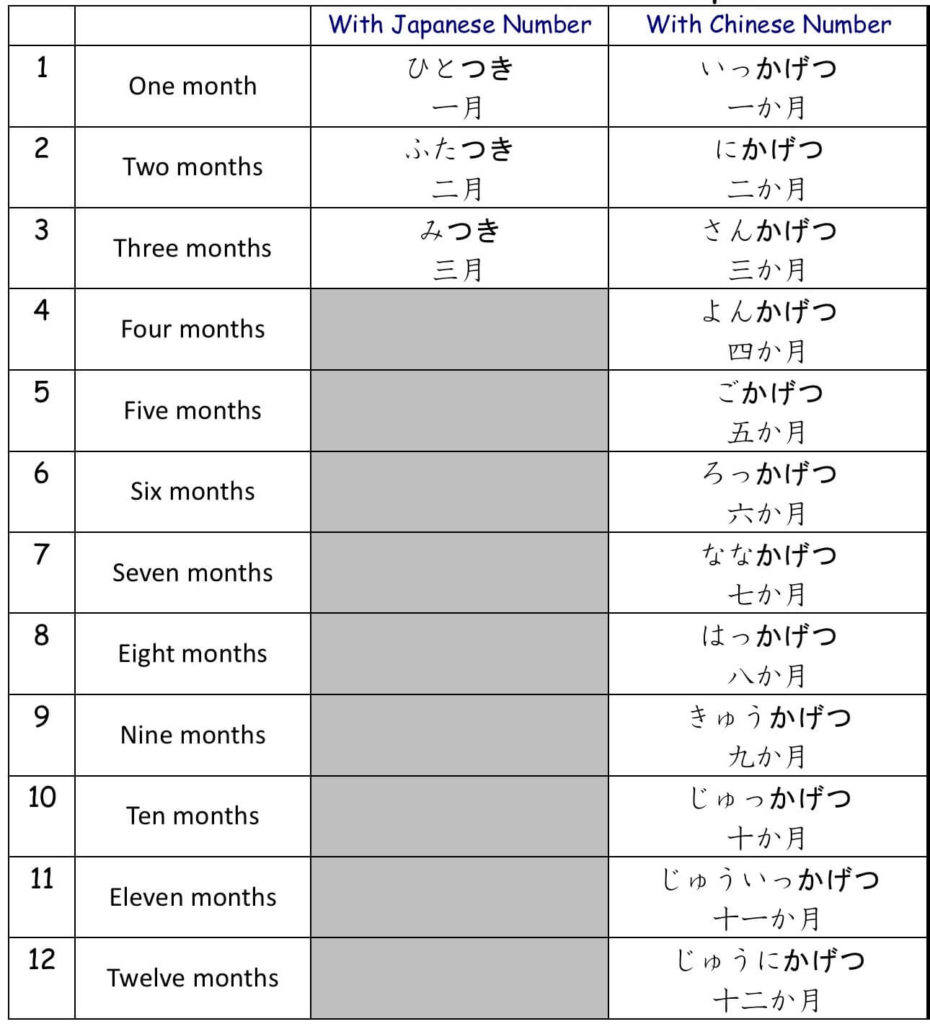
How are they different? つき vs. かげつ
You can use either one when you want to mention the duration of time as in “for one month” in your sentence. It is your personal preference.
Example: I stayed in Japan for one month.
日本にひと月いました。Nihon ni hito
日本に1か月いました。 Nihon ni
Please note that you don’t mark the duration of time with the Time Marker に NI, which is used to mark a point of time such as “AT 5:00” or “ON Sunday.”
So this is wrong.
日本にひと月にいました。Nihon ni hito tsuki NI imashita.
When you use months to indicate the age of a baby, you use かげつ (Kagetsu).
Example: My son is now five months old.
むすこは今、5か月です。Musuko wa ima gokagetsu desu.
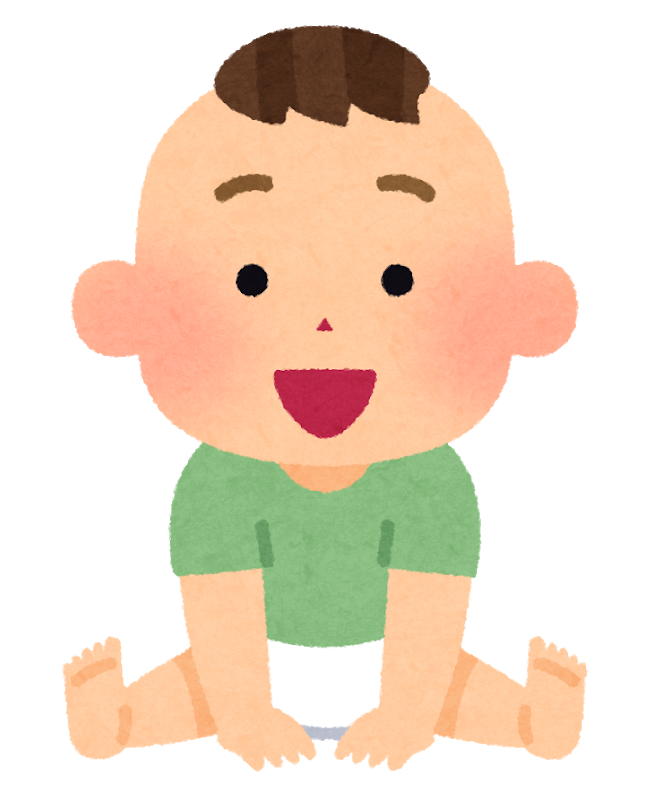
Download the Chart – Japanese Months
I have the chart for Japanese months (PDF) that I created in Romaji, Hiragana, and Kanji. Provide your name and email address below. I will send it to you right away.
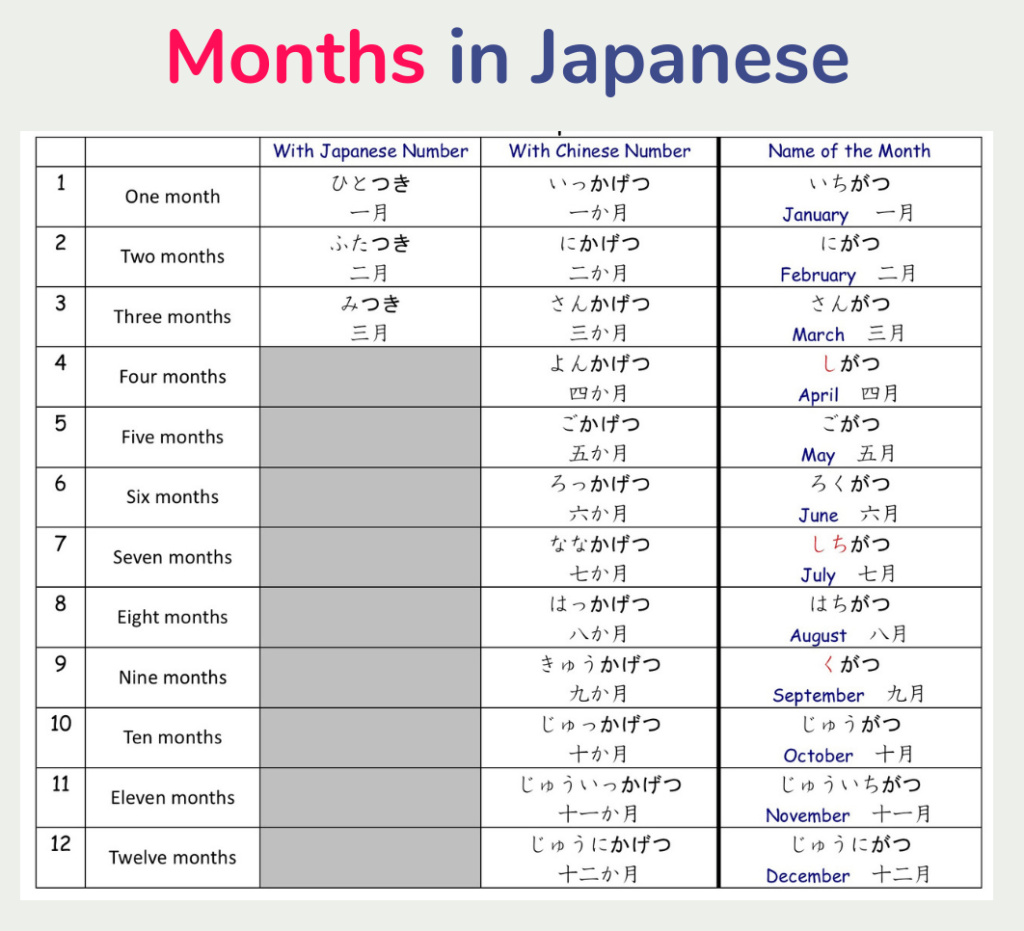
For your learning success, it’s important that your learning style aligns with the teacher’s style of teaching.
How can you check that? – By taking the actual lessons!
Try this mini-course and see if my teaching style matches your learning style.
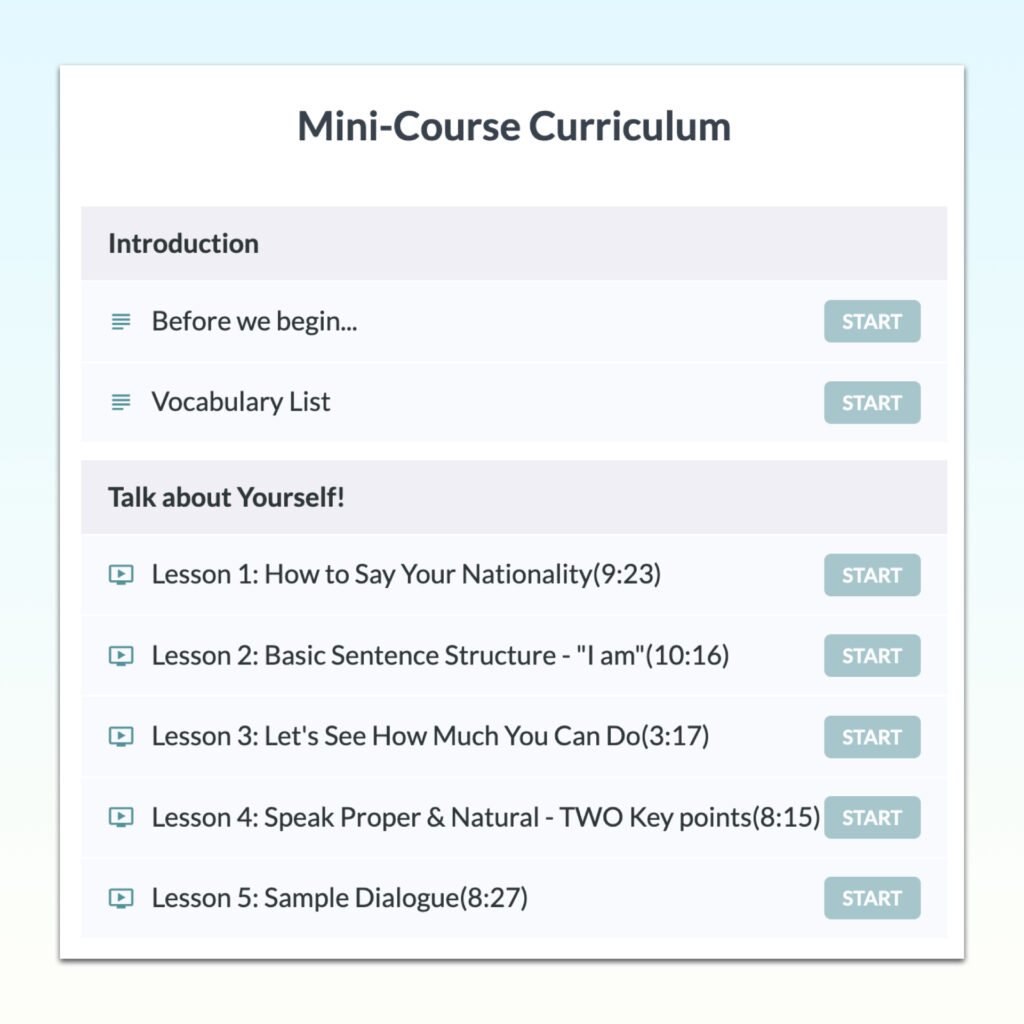
I look forward to being part of your Japanese learning journey! ?

konbanwa yuko sensei thankyuu for this , i understand it easily .
Konnichiwa. I’m glad this short lesson was helpful. ?
Excuse me Yuko Sensei
If you don’t mind , would you like to explain the moderate one of つき and かげつ one more time. Cuz I’m still don’t know how to different between つき and かげつ. To be precise i have trouble how to use つき in sentence
Fangさん、
The literal meaning of つき is “moon” so you can use it in a sentence like this. きょうのつきはきれいですね。Today’s moon is beautiful, isn’t it?
As a counter of months, つき will be used only for up to 3 months in modern Japanese.
ひとつき = いっかげつ
ふたつき = にかげつ
みつき = さんかげつ
Compared to かげつ, counting months with つき sounds more traditional and poetic, which is preferred by older generations. It’s not commonly used by younger generations. I hope this helps!
Yuko Sensei,
I got it. Thank you very much for the explanation, Yuko Sensei. ??
I think the best way to improve your Japanse if you learnt Japanese use Google Play Store or App Store apps I am using one of the apps called Mazii
ZAKI-san,
It sounds like such an interesting way to learn Japanese. I hope the method is working well with you! ?
Konnichiwa sensei.
Maggy desu.
I have come across your videos and find them excellent for beginning foreign Nihongo learners like me.
My school will soon offer a Nihongo course this coming August and I would like to hear suggestions as to what lessons we should include in a 54-hour Nihongo course.
Could you send topic outline which you think would benefit us best.
Arigatoo gozaimasu.
Maggy-san, Hajimemashite.
Thank you so much for the positive comment about my lesson videos. I am glad you liked them. 🙂
I assume from your comment that you work for a school and organize programs. As for the curriculum for an upcoming Japanese course, it totally depends on what outcomes you are aiming at. Japanese programs at a college, high school, elementary school, or a language school all serve different needs of the students. Depending on the needs, you may not want to introduce any Japanese letters or you may feel students need to learn even Kanji during the first 54 hours.
I highly recommend you to research/survey the needs of students at your school in your area in your country first. Then, please discuss the curriculum development with the teacher who is actually going to teach the course.
I wish you a great success of the new Japanese course at your school. Ganbatte kudasai!
Yuko-sensei